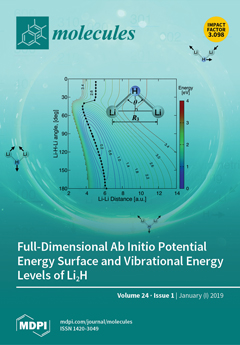Herein, we investigated the effect of ring planarity by fully characterizing four pyridine-based
o-carboranyl compounds.
o-Carborane was introduced to the C4 position of the pyridine rings of 2-phenylpyridine and 2-(benzo[
b]thiophen-2-yl)pyridine (
CB1 and
CB2, respectively), and the compounds
[...] Read more.
Herein, we investigated the effect of ring planarity by fully characterizing four pyridine-based
o-carboranyl compounds.
o-Carborane was introduced to the C4 position of the pyridine rings of 2-phenylpyridine and 2-(benzo[
b]thiophen-2-yl)pyridine (
CB1 and
CB2, respectively), and the compounds were subsequently borylated to obtain the corresponding
C∧N-chelated compounds
CB1B and
CB2B. Single-crystal X-ray diffraction analysis of the molecular structures of
CB2 and
CB2B confirmed that
o-carborane is appended to the aryl moiety. In photoluminescence experiments,
CB2, but not
CB1, showed an intense emission, assignable to intramolecular charge transfer (ICT) transition between the aryl and
o-carborane moieties, in both solution and film states. On the other hand, in both solution and film states,
CB1B and
CB2B demonstrated a strong emission, originating from π-π * transition in the aryl groups, that tailed off to 650 nm owing to the ICT transition. All intramolecular electronic transitions in these
o-carboranyl compounds were verified by theoretical calculations. These results distinctly suggest that the planarity of the aryl groups have a decisive effect on the efficiency of the radiative decay due to the ICT transition.
Full article






